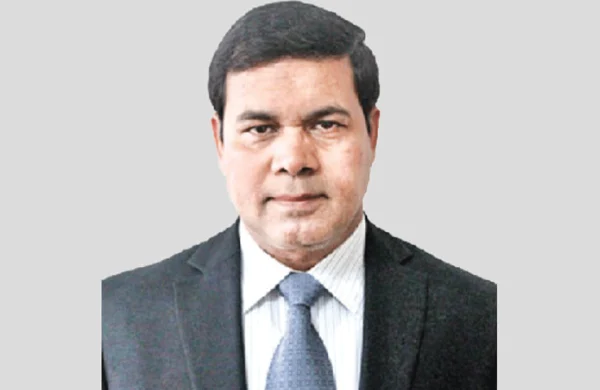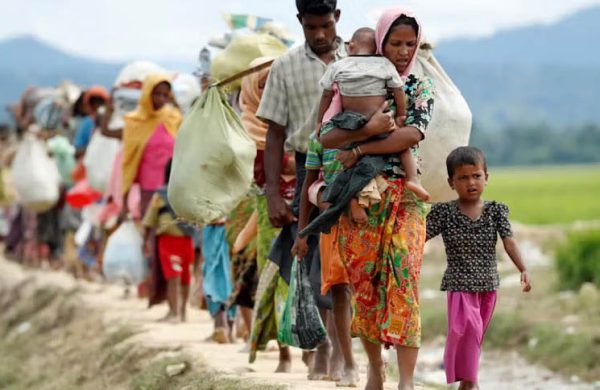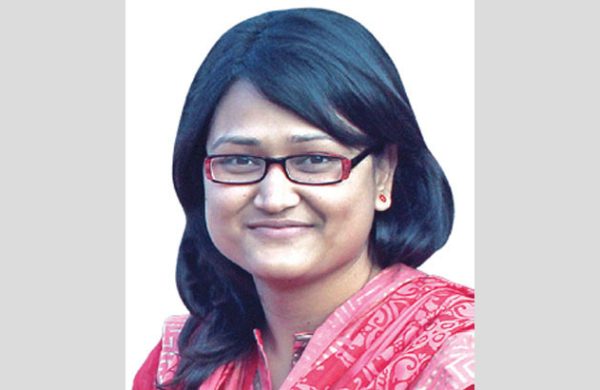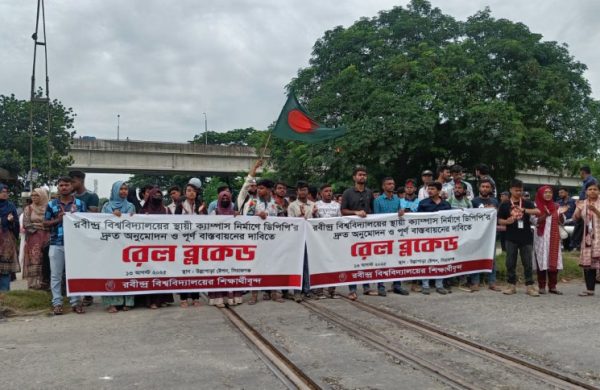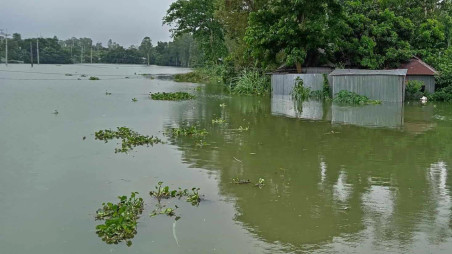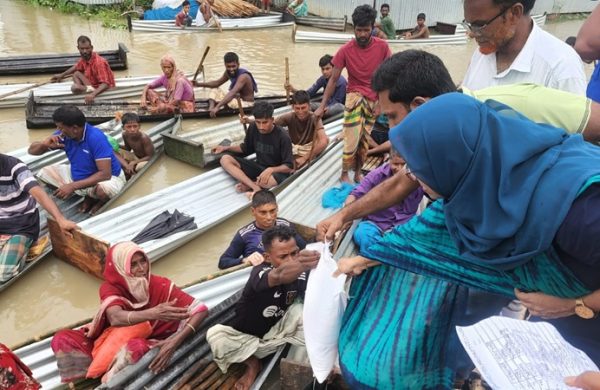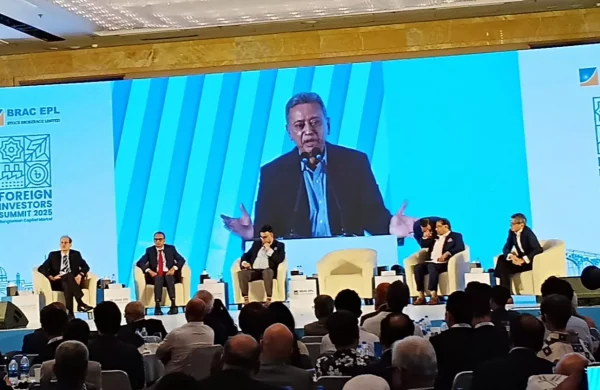Shifting Sands of Bangladesh’s Foreign Policy
- Update Time : Tuesday, August 12, 2025

—H M Nazmul Alam—
In the span of a single year, Bangladesh’s diplomatic compass has swung from a steady, India-oriented north to a far more unpredictable and diversified map. The transition from the Awami League’s decade-and-a-half of governance to an interim administration under Professor Muhammad Yunus has not only been a domestic political upheaval but also a major recalibration in the country’s foreign policy posture. This shift is neither cosmetic nor incidental; it represents a deliberate detachment from a single-country dependency towards a more multipolar engagement strategy. Yet, as is often the case in geopolitics, such changes come with opportunities, risks and unintended consequences.
The rupture with India has been the most visible marker of this transformation. For over fifteen years, Dhaka’s diplomacy was tethered tightly to New Delhi’s orbit— economically, politically and even in security arrangements. That alignment brought predictable benefits: market access, infrastructural investments and a degree of border stability. But it also carried the cost of over-reliance. In the post-Hasina era, this dependency unravelled rapidly. The aftermath of the popular uprising in August 2024 saw not just a cooling of bilateral warmth, but a spiral into mutual suspicion and punitive measures. Trade barriers, visa restrictions and rhetorical hostilities have created a frost that shows no sign of thawing.
This deterioration was not merely the product of domestic political change in Dhaka. It was aggravated by an increasingly nationalistic tone in Indian political discourse, the portrayal of unrest in Bangladesh through the lens of religious minority vulnerability, and the visible political asylum offered to the ousted leadership. In the logic of modern diplomacy, symbolism matters as much as substance—and the optics here signalled estrangement. The result has been a policy vacuum in a relationship once considered central to Bangladesh’s strategic stability.
Into this vacuum stepped Beijing. China’s long-standing courtship of Dhaka has shifted gears, with an intensity reminiscent of its Belt and Road outreach to other strategically placed states. The interim government’s early high-level engagement with China – signing agreements on infrastructure, port development, and health cooperation – demonstrates a conscious pivot.
This strategy mirrors China’s playbook elsewhere, from Sri Lanka to the Pacific Islands, offering not just economic incentives but an alternative model of engagement that sidesteps contentious governance conditionalities. However, as seen in those same examples, Chinese partnerships can carry debt risks, political dependencies and strategic leverage over critical infrastructure. Bangladesh’s embrace of Chinese involvement in Mongla Port development, for example, could alter regional maritime dynamics in ways that invite both economic opportunity and geopolitical scrutiny.
The warming of ties with Pakistan is more symbolic than substantive, but symbolism in diplomacy can be catalytic. Decades of mutual frost over 1971-era wounds and war crimes trials have given way to cautious engagement, including formal meetings after a 15-year hiatus. The renewed dialogue has touched on unresolved historical grievances, but more importantly, it signals Dhaka’s willingness to diversify its diplomatic portfolio, even with partners whose relations are freighted with historical trauma.
The United States and the Western bloc represent another axis of this recalibration. Under the Awami League, relations with Washington were fraught with tensions over human rights, democratic backsliding and targeted sanctions. The interim government initially enjoyed a honeymoon period with the West. Yet the return of Donald Trump to the White House has reintroduced unpredictability, this time in the form of broad-based trade tariffs that spare no ally. In the language of twenty-first-century economic diplomacy, Bangladesh is facing the reality that personal rapport with leaders cannot shield a country from structural shifts in another’s economic policy.
One of the few clear diplomatic “wins” in this period has been the United Nations fact-finding mission’s report on the killings during the student-led uprisings of July–August 2024. This report, widely seen as legitimising the interim government’s narrative of systemic repression under its predecessor, has bolstered its standing in certain multilateral forums. In the practice of contemporary diplomacy, winning the narrative in such international investigations can yield soft power dividends, influencing how donors, partners and global media frame a government’s legitimacy.
Yet for all the novelty of this multi-directional outreach, questions remain about the coherence and sustainability of the strategy. Diversification of alliances is a prudent move for a mid-sized state navigating a volatile geopolitical environment. It offers flexibility, bargaining leverage and the possibility of hedging against overdependence. But it also risks creating a patchwork of relationships with competing powers whose interests are not always reconcilable. The simultaneous courtship of China and the West, improvement of ties with Pakistan while alienating India, and engagement with multilateral bodies while facing criticism on Rohingya policy suggest a foreign policy still in search of an integrated doctrine.
Modern diplomacy increasingly prizes agility over alignment. Small and medium states have found room to manoeuvre by leveraging niche strengths. Bangladesh’s location at the intersection of South and Southeast Asia, with maritime access to the Bay of Bengal, is precisely the kind of asset that larger powers court. But geography cuts both ways: it makes the country a strategic prize for external actors and is a potential arena for their rivalries. Sri Lanka’s recent history is a cautionary tale here—turning from Indian influence to Chinese investment, only to find itself caught in a debt trap and forced to lease strategic assets.
There is also the question of domestic political stability as a precondition for effective diplomacy. Foreign policy gains are fragile if they are not underwritten by predictable governance at home. Partners whether Beijing, Washington, or Islamabad calculate not just on the basis of current leadership but on the likelihood of continuity. An interim government, by definition, raises questions about what comes next. If Bangladesh’s future leadership reverses course or re-aligns with old partners, much of the current diplomatic groundwork could be rendered moot.
Finally, there is the matter of diplomatic priorities. While shifting alignments dominate headlines, pressing issues like the Rohingya crisis, climate resilience financing and trade diversification remain unresolved. The interim government’s handling of the humanitarian corridor to Myanmar has drawn criticism, and its ability to translate new friendships into concrete progress on such fronts will be a key measure of success. In an age where diplomacy is judged not just by who one dines with but by what one delivers, optics must give way to outcomes.
————————————————————————————
The writer is an academic, journalist and political analyst. He can be reached at [email protected]


